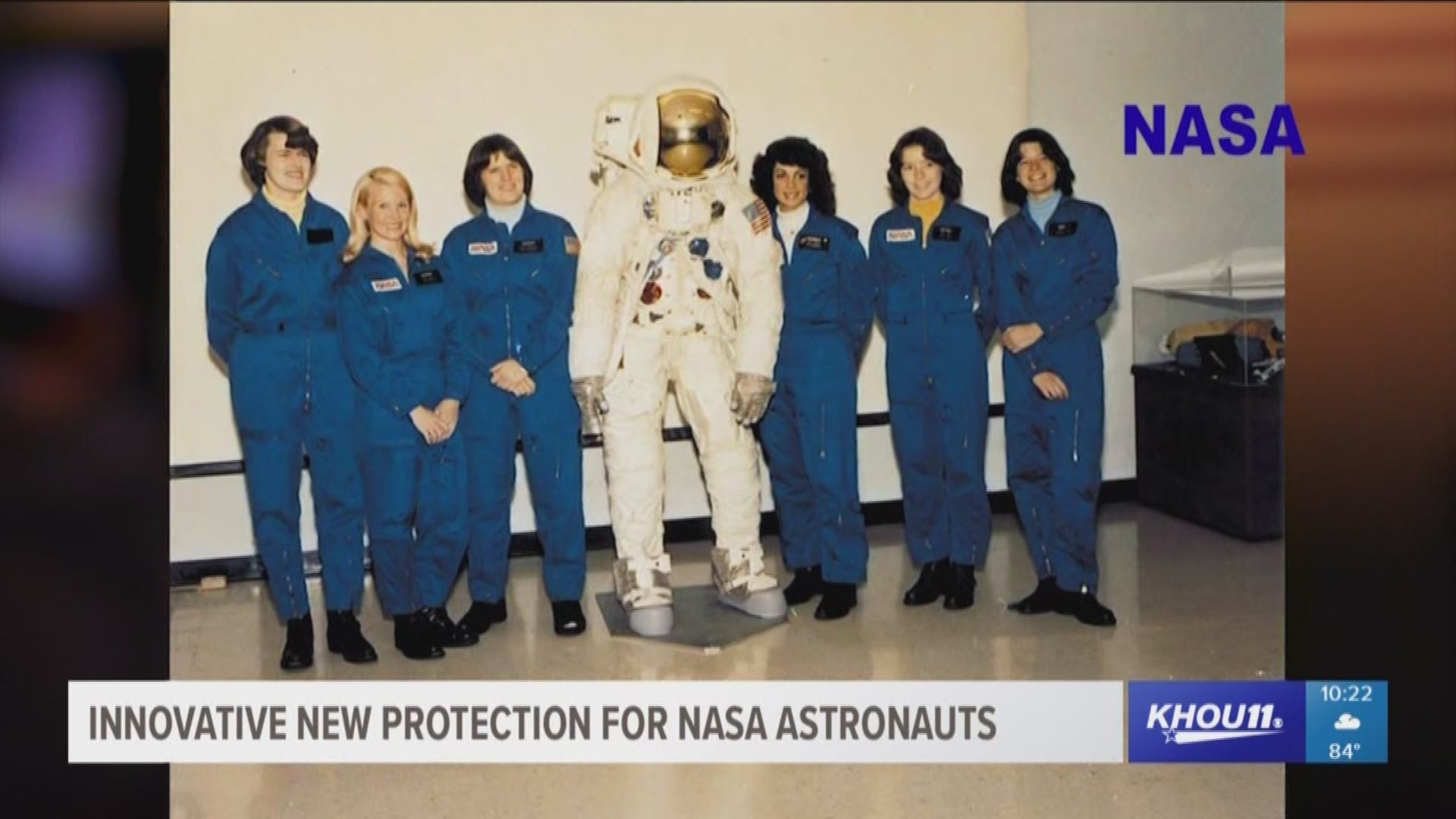HOUSTON — A vest developed by an Israeli company that’s meant to protect female astronauts from radiation is now set to be launched into Space.
The vest, by StemRad, is a wearable shield that protects delicate parts of the female body.
“This is a vest that is intended to provide additional protection against space radiation,” said Dr. John Charles, Scientist in Residence at Space Center Houston. “Especially against the radiation of a solar flare that might occur during an astronaut mission from, say, here to the moon or as part of a Mars mission.”
As NASA prepares for deep space exploration—where the threat of radiation exposure is greater— the vest is crucial in protecting against radiation threats—solar flares, as Dr. Charles mentioned, but also galactic cosmic rays.
The vest is currently designed to protect specific parts of a woman’s body.
“In the area of the stomach, where there’s additional radiation protection provided, and the area of the ovaries, the breast tissue, the lungs, and the upper part of the body,” explained Dr. Charles. “The breast tissues, the lungs, which are very susceptible to radiation, and the blood-forming organs in the upper parts of the body, especially in the bones of the level of the hips. You’ll notice the radiation shielding is actually specific for, say, the stomach, right in this part of the shield here.”
Dr. Charles also said the vest will cut back on the radiation damage to the tissues that might lead to long-term effects, such as atherosclerosis, in the blood vessels.
“It’s all carefully designed so that the thicker parts of the shielding are where the body is more sensitive to radiation.”
The vest, one of two currently developed, will be test flown on the Exploration Mission-1 around the moon in the Orion vehicle. The test flight will be the last before the space agency starts their deep space manned missions—the first since the Apollo missions. The test will have two radiation-sensitive test dummies—one bare, and one wearing the vest.
“The vest will provide an additional radiation protection after the radiation shielding of the vehicle’s structure itself and in addition to what’s called the storm shelter of the spacecraft’s structure for protection against solar-flare charge particles radiated during solar flares. This vest will permit the astronauts in-flight, if it’s flown in-flight, to exit the storm shelter when they need to take care of duties inside the vehicle and get back into the storm shelter. If it’s an especially dangerous solar flare, this vest can actually be worn in the storm shelter to provide additional protection against the radiation of space flight.”
More than a garment, the vest is also an acknowledgement of women’s roles in the program.
“Women are becoming more and more prominent in space flight,” said Dr. Charles. “Of course, we just had a Space Station Mission commanded by a woman astronaut, Peggy Whitson, for her second tour of duty as a commander.”
Once the women’s vest is given the green light, a similar vest will be designed for men.
“The vest will be designed for specific individuals because everyone is going to have a different size and shape of body, and of course, males and females have slightly different susceptibilities based on their different anatomies,” explained Dr. Charles. “So, there will be different vests, for men and women, but they’ll have the same general purpose and function.”

